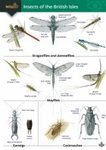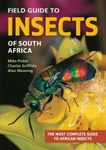Field / Identification Guide Identification Key
By: Luis Óscar Aguado Martín(Author), Alberto Fereres Castiel(Author), Elisa Viñuela Sandoval(Author)
341 pages, 400+ colour photos, b/w illustrations, colour tables
![Guía de Campo de los Polinizadores de España [Field Guide to Pollinators of Spain] Guía de Campo de los Polinizadores de España [Field Guide to Pollinators of Spain]]()
Click to have a closer look
About this book
Customer reviews
Related titles
About this book
Language: Spanish
This work is possibly the most complete guide to pollination and pollinators that has been written in Europe.
In the first part the different types of wind and zoophilic pollination that can occur are presented, and within the zoophilic pollination each of them is explained with some examples and photos. Subsequently the benefits of wild pollinators to different crops (fruit, vegetables, etc.) and benefits and influence of pollinators in maintaining the landscape and their importance for the conservation of native flora are discussed, as well as the production of wild fruit that will inturn serve birds and other animals as food. This first part also includes some examples of actions to help the establishment and conservation of pollinators.
The second part includes practical information and identification keys, so that the reader can work with different groups of pollinating insects such as beetles, flies, or butterflies and social and solitary bees. In particular, the hundreds of interactions between plants and pollinating insects present in the Iberian Peninsula and in both archipelagos are listed.
The text is supplemented by more than 400 photos that will allow the identification of the main families of pollinators as well as numerous species. Finally, in addition to the bibliography, lists organized by pollinating families and orders, as well as plants pollinated by insects, are included.
Summary in Spanish:
El presente trabajo es posiblemente la guía de polinización y polinizadores más completa que se ha realizado en Europa.
En una primera parte se presentan los diferentes tipos de polinización anemófila y zoófila, y dentro de la polinización zoófila se explica en qué consiste cada una de ellas con algunos ejemplos y fotos. Posteriormente se expone como benefician los polinizadores silvestres a diferentes cultivos (frutales, hortalizas, etc.) y se enumeran los beneficios e influencia de los polinizadores en la conservación del paisaje y su importancia para la conservación de la flora autóctona, así como en la producción de frutos silvestres que van a servir a su vez a aves y otros animales como alimento. Esta primera parte incluye también algunos ejemplos de actuaciones para ayudar al establecimiento y conservación de los polinizadores.
En la segunda parte incluimos información práctica y claves a modo de diagnosis, para que se pueda trabajar con los diferentes grupos de insectos polinizadores coleópteros (o escarabajos), dípteros (o moscas), lepidópteros (o mariposas) e himenópteros (abejas sociales y solitarias). Y sobre todo se enumeran cientos de interacciones entre las plantas y los insectos polinizadores presentes en la Península Ibérica así como en ambos archipiélagos.
El texto se ve complementado por más de 400 fotos que permitirán la identificación de las principales familias de insectos polinizadores así como de numerosas especies. Finalmente además de la bibliografía se aporta un listado de polinizadores organizados por familias y órdenes, así como de plantas polinizadas por insectos.
Customer Reviews
Field / Identification Guide Identification Key
By: Luis Óscar Aguado Martín(Author), Alberto Fereres Castiel(Author), Elisa Viñuela Sandoval(Author)
341 pages, 400+ colour photos, b/w illustrations, colour tables






![Guía de Campo de los Polinizadores de España [Field Guide to Pollinators of Spain] Guía de Campo de los Polinizadores de España [Field Guide to Pollinators of Spain]](http://mediacdn.nhbs.com/jackets/jackets_resizer_xlarge/22/229925.jpg?height=620)
![Guía de Campo de los Polinizadores de España [Field Guide to Pollinators of Spain]](http://mediacdn.nhbs.com/jackets/jackets_resizer/22/229925.jpg)
![Guía de Campo de los Polinizadores de España [Field Guide to Pollinators of Spain]](http://mediacdn.nhbs.com/jackets/jackets_resizer/22/229925_1.jpg)
![Guía de Campo de los Polinizadores de España [Field Guide to Pollinators of Spain]](http://mediacdn.nhbs.com/jackets/jackets_resizer/22/229925_2.jpg)
![Guía de Campo de los Polinizadores de España [Field Guide to Pollinators of Spain]](http://mediacdn.nhbs.com/jackets/jackets_resizer/22/229925_3.jpg)
![Guía de Campo de los Polinizadores de España [Field Guide to Pollinators of Spain]](http://mediacdn.nhbs.com/jackets/jackets_resizer/22/229925_4.jpg)
















![Guia de Los Arboles y Arbustos de la Peninsula Iberica y Baleares [Guide to the Trees and Shrubs of the Iberian Peninsula and the Balearic Islands]](http://mediacdn.nhbs.com/jackets/jackets_resizer_medium/16/168797.jpg?height=150&width=94)
![Enciclopedia Ilustrada de los Cactus y Otras Suculentas: Descripciónes de las Especies, Hábitat y Cuidados de Cultivo, Volumen II [Illustrated Encyclopedia of Cacti and Other Succulents: Species Descriptions, Habitat and Cultivation, Volume II]](http://mediacdn.nhbs.com/jackets/jackets_resizer_medium/16/166327.jpg?height=150&width=113)
![Aves de Asturias: Guía de Identificación [Birds of Asturias: Identification Guide]](http://mediacdn.nhbs.com/jackets/jackets_resizer_medium/21/219131.jpg?height=150&width=94)
![Los Arboles y Arbustos de la Peninsula Iberica e Islas Baleares: Especies Silvestres y las Principales Cultivadas [The Trees and Shrubs of the Iberian Peninsula and Balearic Islands: The Wild and the Main Cultivated Species] (2-Volume Set)](http://mediacdn.nhbs.com/jackets/jackets_resizer_medium/15/159953.jpg?height=150&width=203)